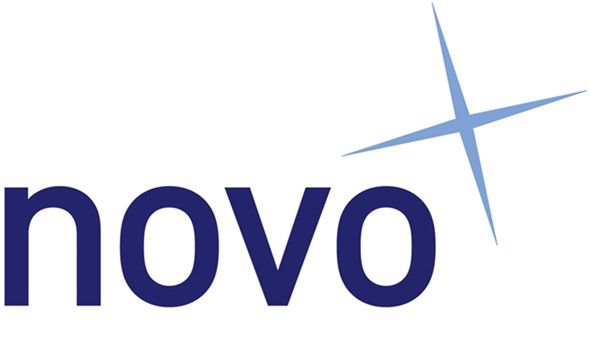Strategies to Retain Top Executive Talent

A company’s success hinges on its ability to attract and retain top-tier leadership capable of driving innovation, navigating complexities, and propelling the organisation forward. Those adept at attracting, training, and retaining talent position themselves for sustained success. Effective retention also leads to better hiring -the better you retain talent, the more attractive you are to new talent.
But how does a company retain the C-suite? Even the most prominent companies struggle to retain their executive talent with employee loyalty dropping and priorities changing. To unravel the secrets of executive retention strategies, we turned to NovoExec’s top management, drawing from their 20 years of closely working with leadership.
Discover why executives are leaving
If you have a retention problem, the last thing you should do is create an executive retention plan without understanding why. Four primary paths lead to turnover:
- Planned migration to another job.
- Discovery of a better alternative form of employment.
- Dissatisfaction.
- Negative experiences.
While the first path is challenging to mitigate, conducting executive satisfaction interviews provides insights and helps address potential flight risks related to other reasons.
Executives who have given considerable effort towards an organisation won’t be tempted by standard benefits. Instead, corporations should customise their executive retention strategies to the C-suite’s needs and wants. Below, we’ve outlined the benefits that the top management looks for in companies.
The Company’s Purpose & Mission is Important
Tim Toterhi, Chief Human Resources Officer of Plotline Leadership, emphasises the importance of impact and influence over critical changes at the senior-most level. This makes sense, given that most people are closer to self-actualisation at that stage. Executives seek to create an impact, leaving a lasting legacy aligned with their self-actualisation stage. Remind them of the company’s purpose and mission, emphasising the values that initially attracted them. Simply announcing values is not enough – values should be embodied in the organisation’s day-to-day work. Make it clear that if executives feel their mission is incomplete, the change is theirs to lead.
Values alignment is crucial, as evidenced by a recent report indicating that 46% of employees are considering leaving their jobs due to misaligned values. Values alignment is so critical to employees, that 52% are willing to take a pay cut to work at a company with values better aligned with their own. Gen Z and Millennials are the most concerned about company values, showing a trend that leaders planning for the long term should be concerned about.
Fostering a Positive Company Culture
While mission, growth opportunities, and salary attract talent, the company culture retains them. A good culture boosts engagement, and engaged employees are both happier and more productive. PwC’s Global Culture Report highlights that 66% of C-suite executives consider culture more important for performance than the organisation’s strategy or operating model.
But what exactly is a ‘good culture’? A good culture is aligned with your company’s vision and mission and prioritises employees’ well-being. Prioritising mental and physical health, providing autonomy and flexibility, investing in training, and fostering open and honest communication contribute to a healthy culture.
Prioritising Mental & Physical Wellness
Executive well-being has emerged as a top priority, with 81% of the C-suite saying that improving their well-being is more important than advancing their career, according to a recent Deloitte survey. According to the survey, 70% of executives are seriously considering quitting their jobs for work that better supports their well-being. Top management is more concerned about their well-being than entry and mid-level employees. While low-level employees also had the same concerns, only 57% said that they’d take the same leap. Leaders have more leverage in terms of being able to leave their job, because it’s easier for them to find a new one. That’s why you must value and support your leaderships’ health and wellbeing if you want them to stay.
The best executive retention strategies for well-being are outlined below.
Sabbaticals & Mandatory Holiday
The biggest obstacles to achieving well-being goals for the C-suite are heavy workload, with 73% saying they aren’t able to take time off and disconnect according to a 2022 Deloitte study. The C-suite’s demanding roles, increased responsibility, and exhausting schedules often prevent them from practicing self-care or taking time off. They also suffer from unhealthy stress levels and a lack of support from their employers which can take a physical and mental toll. Sabbaticals and mandatory holiday, though challenging to take, play a crucial role in achieving well-being goals. If execs can’t step away from work, then ‘bleisure’ (business+leisure) travel is a good way to give them a break. 79% of business travelers claim that a seamless travel experience positively impacts their overall job satisfaction, according to a recent report.
Building a Wellbeing Culture
Peer pressure prevents 22% of executives from taking time off because they ‘want people to know they’re dedicated to their job.’ The solution is to create a company culture that celebrates prioritizing health and taking time off.
Part of a ‘wellbeing culture’ also involves small steps such as gym memberships, free fruit stalls, and putting up motivational quotes. Additionally ‘wellbeing activities’ such as meditation and yoga beaks and mid-day fitness or dance classes contribute to improving wellbeing. These 5-30 min activities can be done as a team, at the start of the day, or during breaktime.
Embracing Remote Work Flexibility
The demand for remote work post-pandemic has reshaped the work landscape due to the flexibility and work-life-balance it brings. Certain leaders opposed the new model, fearing a drop in productivity. However, the stats are in and hybrid/flexible work models have demonstrated the lowest turnover rates since 2019, with remote roles experiencing a 5% lower turnover rate than office-based roles in 2023.
While remote work for executives presents challenges in collaboration and building company culture, the benefits of flexibility in work schedules, improved work-life balance, and family bonding cannot be ignored. Execs also deserve the same flexibility to better integrate work and family responsibilities. Ultimately, allowing executives to work remotely depends on role-specific demands but it shouldn’t be ignored as part of your executive retention strategies for managers.
Investing in Professional Enrichment and Executive Coaching
Professional development has shifted from being a nice perk to an absolute necessity, with 60% of CEOs saying upskilling is their top priority. The professional landscape has become even more competitive thanks to the emergence of AI, and employees who feel supported in keeping up with these changes are likely to remain loyal. The resources provided should extend beyond professional skills to encompass mental health, financial management, and spiritual/religious learning. For the executive team, personalised coaching with a leadership coach is indispensable. It provides tailored guidance and support and elevates leadership skills to meet the demands of their high-level responsibilities.
Lastly, open communication is key throughout these retention strategies for executives. Benefits convey to employees their organisation cares about them, but trust is broken if mishandled. To build trust, be transparent about the benefits and the criteria to qualify. Consult your team about their preferences and encourage open communication, to help build a thriving organisation.
References:
https://www.shrm.org/resourcesandtools/tools-and-samples/toolkits/pages/managingforemployeeretention.aspx
https://www.qualtrics.com/blog/company-values-employee-retention/
https://seniorexecutive.com/the-business-travelers-guide-to-bleisure/
https://www.gbta.org/business-travels-influence-on-employee-retention-recruitment-and-results/
https://www2.deloitte.com/us/en/insights/topics/leadership/employee-wellness-in-the-corporate-workplace.html
https://hrreview.co.uk/hr-news/recruitment/employee-turnover-rates-have-increased-by-9-since-2019/150788
https://www.hrexchangenetwork.com/employee-engagement/reports/state-of-hr-report-2021
https://www.pwc.com/gx/en/issues/upskilling/global-culture-survey-2021.html












